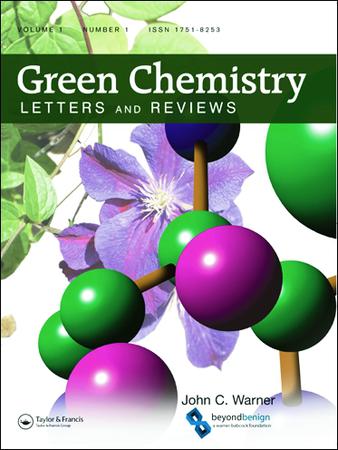从聚对苯二甲酸乙酯塑料废料中无排放水热低温合成碳纳米材料,用于优异的超级电容器应用
IF 5.8
3区 化学
Q1 CHEMISTRY, MULTIDISCIPLINARY
引用次数: 4
摘要
本文章由计算机程序翻译,如有差异,请以英文原文为准。
Non-emission hydrothermal low-temperature synthesis of carbon nanomaterials from poly (ethylene terephthalate) plastic waste for excellent supercapacitor applications
ABSTRACT Poly(ethylene terephthalate) (PET) has a wide range of applications that generate a lot of waste globally; thus, upcycling PET is important because it offers several industrial and economic advantages. This study describes a sustainable, emissions-free process for converting PET plastics into carbon nanomaterials (CNMs) named PT-nano powder. The thermal-hydrothermal method has employed the production of PT-nano powder above the glass transition temperature (Tg) of PET plastics. Under optimal conditions, PET plastics were efficiently converted into PT-nano powder with 86.6% crystallinity and an average particle size of 6.5 nm. The PT-nano powder was characterized for physical and chemical properties using different techniques, including UV-Vis, FTIR, Raman spectroscopy, XRD, FESEM, TEM, and proton NMR analysis. The characterization confirms the complete conversion of PET to solid fractions of carbon nanomaterial. The PT-nano powder was tested in supercapacitor performance application with electrochemical characterization. The symmetric fabrication showed a specific capacitance of 250.8 F/g, energy density of 34.83Wh/kg, and power density of 999.9W/kg with a current density of 0.5A/g. The device fabrication exhibited high cycle stability and high capacitance retention of 96.8% with a current density of 1.5A/g after 10000 cycles. GRAPHICAL ABSTRACT
求助全文
通过发布文献求助,成功后即可免费获取论文全文。
去求助
来源期刊

Green Chemistry Letters and Reviews
CHEMISTRY, MULTIDISCIPLINARY-GREEN & SUSTAINABLE SCIENCE & TECHNOLOGY
CiteScore
9.10
自引率
3.00%
发文量
48
期刊介绍:
Green Chemistry Letters and Reviews is an Open Access, peer-reviewed journal focused on rapid publication of innovative new syntheses and procedures that reduce or eliminate the use and generation of hazardous materials. Reviews of state-of-the-art green chemistry technologies are also included within the journal''s scope.
Green Chemistry Letters and Reviews is divided into three overlapping topic areas: research, education, and industrial implementation. The journal publishes both letters, which concisely communicate the most time-sensitive results, and reviews, which aid researchers in understanding the state of science on important green chemistry topics. Submissions are encouraged which apply the 12 principles of green chemistry to:
-Green Chemistry Education-
Synthetic Reaction Pathways-
Research and Process Analytical Techniques-
Separation and Purification Technologies-
Renewable Feedstocks-
Degradable Products
 求助内容:
求助内容: 应助结果提醒方式:
应助结果提醒方式:


